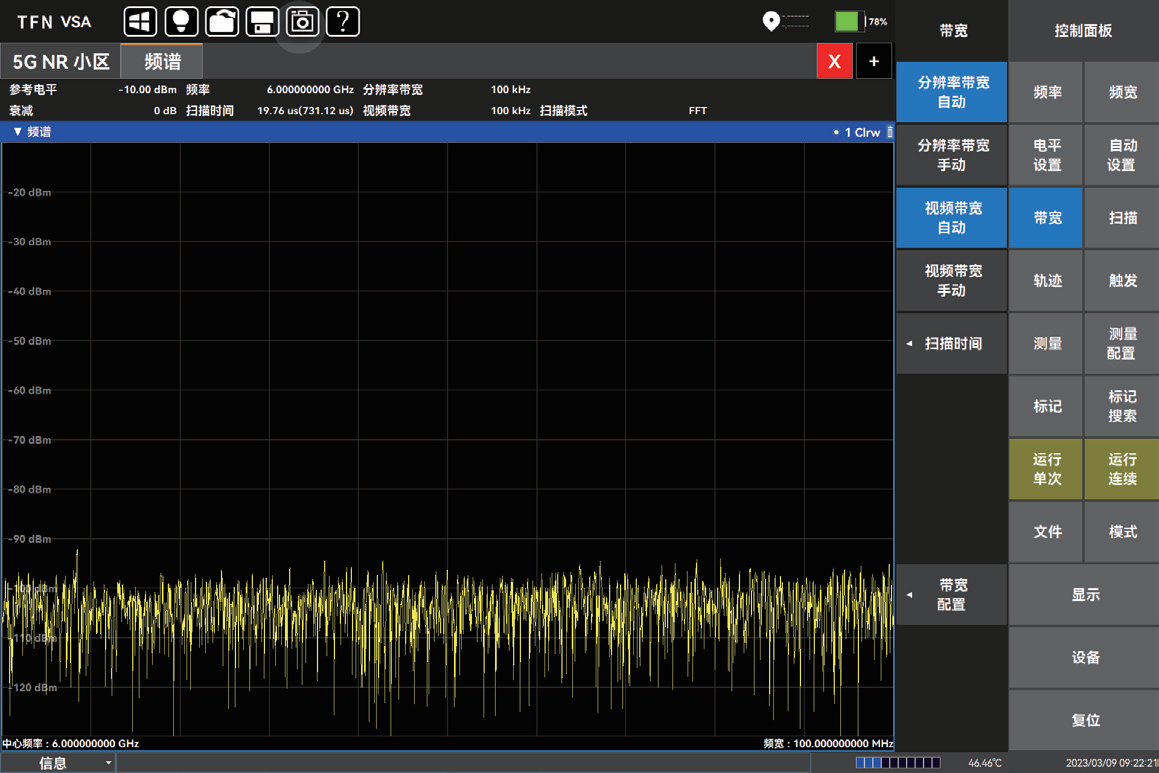The difference between the Video Bandwidth (VBW) and the Resolution Bandwidth (RBW) of the spectrum analyzer
The bandwidth of the spectrum analyzer is an important parameter, which determines the instrument's signal processing capability and measurement accuracy. Common bandwidth types are: input bandwidth (or maximum analysis bandwidth), resolution bandwidth (or resolution bandwidth RBW), video bandwidth (VBW), intermediate frequency bandwidth (IF Bandwidth), real-time bandwidth (RTBW), and sweep bandwidth. Many people often cannot distinguish the difference between resolution bandwidth and video bandwidth. This article will help you distinguish the difference between these two bandwidths.
What is Video Bandwidth (VBW)?
Video bandwidth is the bandwidth of the spectrum analyzer for video filtering of the detected signal, indicating the smoothness of the displayed signal. Video bandwidth is used to low-pass filter the detected signal, reduce the displayed noise fluctuation, and make the spectrum curve smoother. Video bandwidth does not affect the resolution of the spectrum, but it affects the displayed signal noise level. In the actual operation of the spectrum analyzer, a smaller video bandwidth is suitable for observing stable signals or scenes that require smooth display. If a smaller video bandwidth is used, the displayed spectrum will be smoother, but it may cover up rapidly changing signals. A larger video bandwidth is suitable for observing rapidly changing signals. If a larger video bandwidth is used, more noise fluctuations will be displayed, but it can more truly reflect the dynamic changes of the signal.
What is Resolution Bandwidth (RBW)?
Resolution bandwidth is the ability of a spectrum analyzer to distinguish adjacent frequency signals. It indicates the frequency resolution of the analyzer. It is the bandwidth of the intermediate frequency filter through which the signal passes. The resolution bandwidth determines the minimum frequency interval that the spectrum analyzer can distinguish, which directly affects the resolution of the spectrum. It is suitable for scenes that require accurate resolution of narrowband signals, such as spectrum analysis of modulated signals. In the actual operation of the spectrum analyzer, a smaller resolution bandwidth is suitable for observing details or distinguishing dense spectrum signals. It can more clearly distinguish adjacent narrowband signals, but it will cause the scanning speed to slow down. A larger resolution bandwidth is suitable for fast scanning of wideband signals, which will speed up the scanning speed, but it may cause adjacent signals to overlap and be unable to distinguish.
The difference between Video Bandwidth (VBW) and Resolution Bandwidth (RBW)
Parameters |
RBW (resolution bandwidth) |
VBW (Video Bandwidth) |
Definition |
The bandwidth of the intermediate frequency filter determines the frequency resolution |
The bandwidth of the video filter determines the display smoothness |
Function |
Determines the spectrum resolution and distinguishes adjacent signals |
Smooth display signal and reduce noise fluctuations |
Influence |
Affects the resolution and scanning speed of the spectrum |
Affects the display smoothness and noise level |
Adjustment |
Small RBW: high resolution, slow scanning; large RBW: low resolution, fast scanning |
Small VBW: smooth display; large VBW: more display noise |
In short, the resolution bandwidth determines the spectrum resolution and is suitable for distinguishing adjacent signals; the video bandwidth determines the display smoothness and is suitable for reducing noise fluctuations. In actual operation, the settings of the resolution bandwidth and video bandwidth need to be weighed according to the measurement target and signal characteristics. The resolution bandwidth is usually larger than the video bandwidth. We usually set the video bandwidth to 1/3 or less of the resolution bandwidth to obtain a smooth display with sufficient resolution. In addition, when measuring narrowband signals, choose a smaller resolution bandwidth and video bandwidth; when quickly scanning wideband signals, choose a larger resolution bandwidth and video bandwidth.

TFN RMT series spectrum analyzers can automatically and manually adjust the video bandwidth and analysis bandwidth (resolution bandwidth). When you need to adjust the resolution bandwidth, the adjustment range is 1Hz-3MHz. In manual mode, you can use the numeric keys and the rotary wheel to set it. In automatic mode, it changes with the span width according to the SPAN/RBW ratio. When you need to adjust the video bandwidth, the adjustment range is also 1Hz-3MHz. In manual mode, you can use the numeric keys and the rotary wheel to set it. In automatic mode, it changes with the resolution bandwidth according to the RBW/VBW ratio.
If you are interested in the TFN RMT series spectrum analyzer and its related parameter knowledge, please contact the TFN sales team:
Email: info@tfngj.com
WhatsApp: +86-18765219251
Facebook: https://www.facebook.com/tfnfate/
